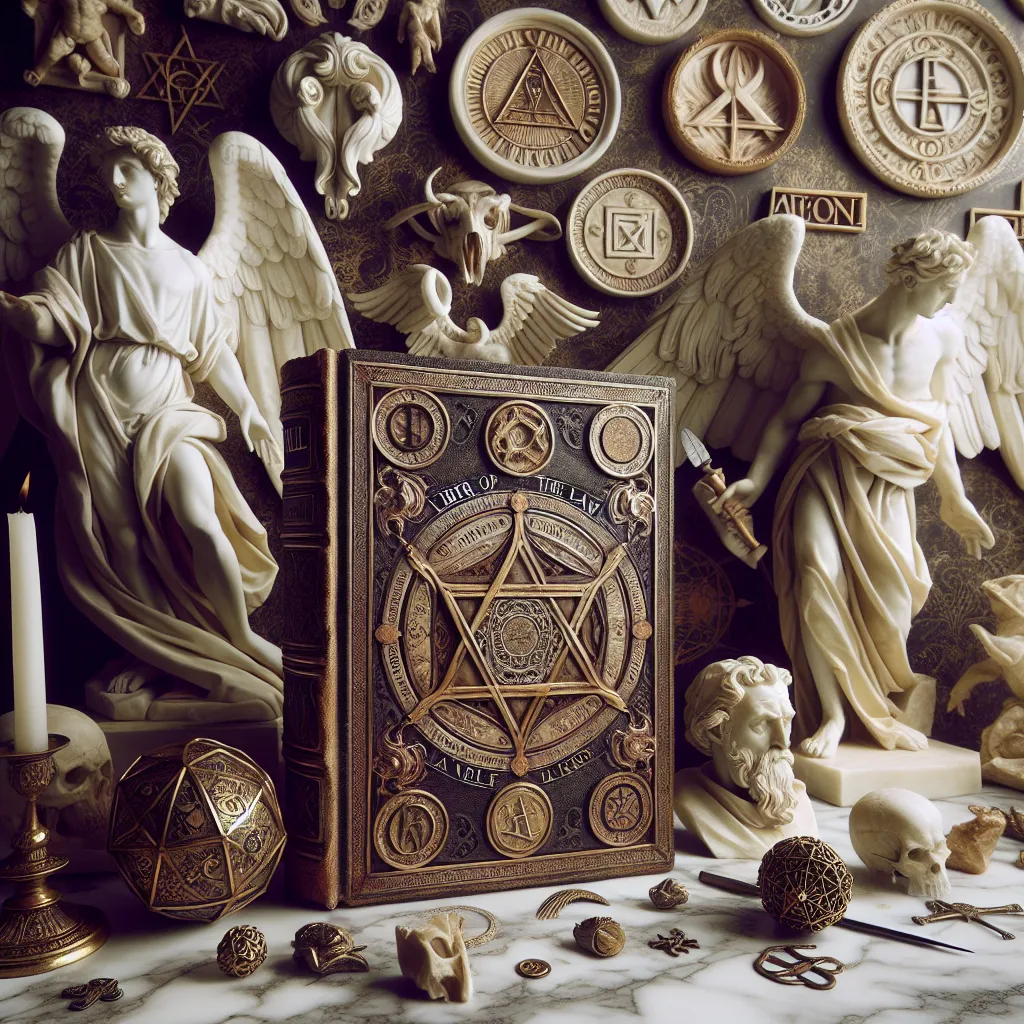
- Published on
- Authors

- Name
- You
The Book of the Law: Liber AL vel Legis
Introduction
In the crossroads of mystical wisdom and scientific inquiry lies The Book of the Law, also known as Liber AL vel Legis. Penned by the enigmatic Aleister Crowley, this central text of Thelema has inspired both trepidation and admiration since its first appearance in 1904. This article invites you on a journey through its reception, its teachings on the nature of Will, and its elucidation of the Aeons, blending the arcane with the quantum to illuminate the path for the curious mind.
The Mysterious Reception
The story of The Book of the Law begins in Cairo, 1904, where Crowley reported receiving the text from a non-corporeal entity named Aiwass over three days. This unparalleled event situated the text in a lineage of divinely inspired works, akin to the Vedas or the Qur'an.
Let's look at a simplified timeline of its reception:
| Date | Event |
|---|---|
| April 8, 1904 | Crowley receives the first chapter from Aiwass |
| April 9, 1904 | The second chapter is transmitted |
| April 10, 1904 | The third chapter completes the book |
| 1909 | The Book of the Law first published |
This reception narrative, while controversial, encapsulates the mystical essence of Thelema and sets the stage for its teachings.
Teachings on the Nature of Will
Central to Thelema's philosophy is the concept of True Will. Quoting the text:
"Do what thou wilt shall be the whole of the Law."
"Love is the law, love under will."
In this doctrine, we find a profound alignment with quantum mechanics, where the observer's intent collapses probabilities into a single, experienced reality. Here’s a comparative table to draw parallels:
| Thelema | Quantum Mechanics |
|---|---|
| True Will | Wave Function Collapse |
| Individual's purpose aligns with the Universe | Observer effect impacts outcome |
| Existence of Aeons | Temporal phases in a scientific framework |
The Aeons: Cycles of Existence
The concept of Aeons within Thelema posits that humanity evolves through distinct spiritual ages. Crowley identifies three main Aeons:
Aeons Overview
| Aeon | Era | Characteristics |
|---|---|---|
| Aeon of Isis | Pre-Christian | Matriarchal worship, feminine divine |
| Aeon of Osiris | Christian Era | Patriarchal systems, death and resurrection themes |
| Aeon of Horus | Current Age | Child god, self-realization, and individual Will |
In the current Aeon of Horus, humanity is awakening to personal sovereignty and self-realization, a shift that mirrors the quantum leap in consciousness. We are participants in a cosmic dance, each step governed by an interplay of will and probability.
Blending Mysticism and Science
Ancient Wisdom Meets Quantum Realities
Ancient wisdom speaks of interconnectedness, a concept now echoed in the quantum principle of entanglement — two particles behave as a single entity, regardless of distance.
| Ancient Teaching | Quantum Counterpart |
|---|---|
| "We are all one." | Quantum Entanglement |
| "As above, so below." | Fractal Holographic Universe |
| "The true nature of reality is hidden." | Uncertainty Principle |
Practical Insights
Meditation and Intent: Regular meditation aligns the practitioner's intent with their True Will, much like a quantum observer focusing to manifest a particular outcome.
Sacred Geometry and Physics: Delving into sacred geometry reveals patterns that recur in quantum physics, suggesting a hidden blueprint within creation's fabric.
Conclusion
The Book of the Law remains a seminal work that bridges the mystical with the scientific, a testament to humanity's enduring quest for knowledge and self-realization. In embracing its wisdom, we traverse the Aeons armed with the understanding that our Will is not merely a personal ambition, but a universal force, woven into the very fabric of our quantum reality.
"There is no law beyond Do what thou wilt."
May this blend of science and mysticism inspire you to seek your True Will and navigate the Aeons with clarity and purpose.
References
- Crowley, Aleister. The Book of the Law. Weiser Books, 2004.
- Penrose, Roger. The Road to Reality. Jonathan Cape, 2004.
- Bohm, David. Wholeness and the Implicate Order. Routledge, 1980.
This unfolding journey through The Book of the Law is far from complete; it is but an invitation to continue exploring the inexhaustible depths of the metaphysical and the quantum, where every seeker becomes a co-creator of their own universe.
